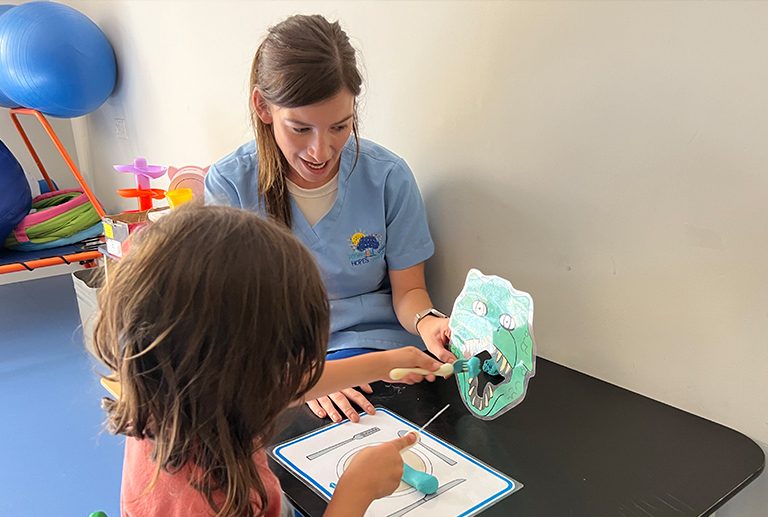Improving occupational therapy at home can significantly support your child’s progress and help them achieve their therapy goals. By integrating child occupational therapy techniques into daily routines and creating a supportive environment, you can complement the work done in therapy sessions and facilitate ongoing development. Find here some steps to improve child occupational therapy at home effectively:
Collaborate with the therapist:
Open communication with your child’s occupational therapist is important. Discuss your child’s therapy goals, the specific techniques used during sessions, and how you can reinforce these techniques at home. Request detailed instructions or resources that can guide you in implementing therapy activities effectively. Understanding the therapist’s approach will help you align home activities with therapeutic objectives.
Create a structured daily routine:
Consistency is key in reinforcing therapeutic goals. Establish a structured daily routine that incorporates therapy activities into your child’s regular schedule. Designate specific times for therapy exercises, such as before or after school, to build a habit. A predictable routine helps children understand what to expect and integrates therapy smoothly into their lives.
Set up a therapy-friendly space:
Designate a space in your home for therapy activities. This area should be well-organised and equipped with necessary materials such as therapy balls, resistance bands, or sensory toys. A dedicated space helps create a focused environment where your child can engage in therapy exercises without distractions. Ensure the area is safe and comfortable to encourage participation.
Use everyday activities as therapy opportunities:
Incorporate therapy techniques into everyday activities to make practice enjoyable and functional. For example, use meal times to work on fine motor skills by having your child help with meal preparation, or encourage them to use utensils to improve hand-eye coordination. Activities like dressing, brushing teeth, or playing with toys can also be opportunities to practice skills related to their therapy goals.
Encourage and motivate:
Positive reinforcement can significantly improve your child’s engagement and motivation. Celebrate their successes, no matter how small, and provide praise and encouragement during therapy activities. Use rewards or incentives to make the process enjoyable and to motivate your child to participate actively. Acknowledge their efforts and progress to build confidence and enthusiasm.
